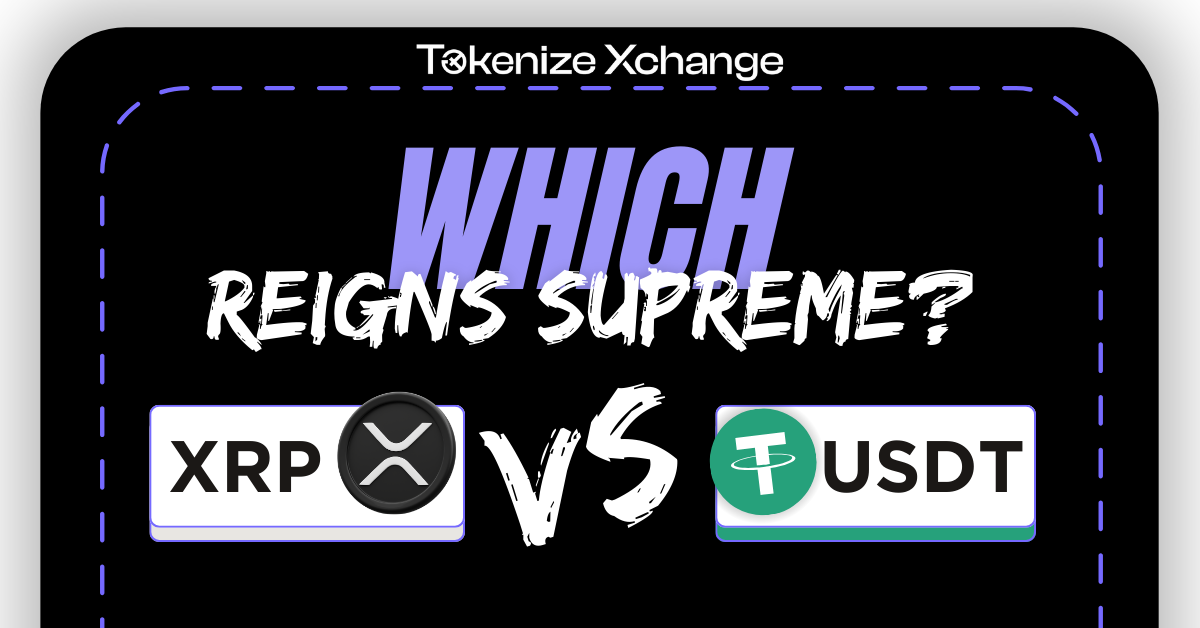
Cryptocurrency can be a bit like the Wild West, with lots of risks and uncertainties. That’s why people are looking for safer options than USDT. In this article, we’ll talk about XRP, which is like a trustworthy friend in this digital world.
XRP is different from USDT because it follows clear rules set by the government in Malaysia. This means users can feel more secure knowing there are rules to protect them. Unlike USDT, which operates in a sort of “gray area,” XRP gives users peace of mind and legal protection, making it a safer choice for trading.
We’ll break down the differences between XRP and USDT so you can see why XRP is a better option. By understanding these differences, you’ll see why more and more people are choosing XRP for their cryptocurrency transactions.
XRP vs USDT

XRP (RIPPLE)

Designed for Payments: XRP is meticulously crafted to facilitate fast, secure, and cost-effective global transactions, making it an ideal choice for individuals and businesses alike seeking efficient payment solutions.
Speed Demon: One of XRP’s standout features is its lightning-fast transaction settlement, taking mere seconds to finalize transactions, a stark contrast to the often lengthy wait times associated with USDT transactions.
Eco-Friendly: In an era where environmental sustainability is of paramount importance, XRP shines as an eco-conscious digital asset, consuming significantly less energy compared to proof-of-work currencies like Bitcoin.
Scalable Solution: XRP boasts impressive scalability, capable of handling high transaction volumes with ease, ensuring seamless operation even during periods of heightened activity on the network.
USDT (TETHER)

Price Stability: USDT is pegged to the US dollar, offering price stability and serving as a reliable store of value amidst the volatility commonly observed in the cryptocurrency market.
Fiat on the Blockchain: USDT bridges the gap between traditional finance and the blockchain ecosystem, providing users with a convenient means of transferring fiat currencies across digital platforms.
Widely Accepted: With widespread adoption across numerous cryptocurrency exchanges and trading platforms, USDT enjoys broad acceptance and serves as a preferred choice for traders seeking stability in their digital asset holdings.
Comparing XRP and USDT: A Closer Look
In the world of digital assets, the choice between XRP and USDT boils down to more than just functionality; it’s about reliability, affordability, and transparency. Let’s delve deeper into the nuances of these two prominent cryptocurrencies:
USDT Drawbacks:
- Slow and Steady: USDT transactions often suffer from sluggish processing times, attributed to their reliance on traditional banking systems. This delay can impede efficiency and hinder timely transactions, especially in fast-paced trading environments.
- High Fees: Sending USDT transactions can incur disproportionately high fees, particularly for smaller transfers. These fees eat into the value being transferred, making USDT less cost-effective, especially for microtransactions.
- Centralized Control: Perhaps the most significant concern surrounding USDT is its centralized control by Tether Limited. This centralized authority raises valid questions about transparency and accountability, as users must place their trust in a single entity to manage the issuance and operation of USDT.
XRP Advantages:
- Designed for the Real World: XRP stands out for its practicality, offering fast, secure, and cost-effective transactions tailored to real-world use cases. Whether it’s facilitating cross-border payments or executing microtransactions, XRP is designed to meet the demands of everyday transactions with unparalleled efficiency.
- Sustainable and Eco-Friendly: Unlike energy-intensive proof-of-work cryptocurrencies, XRP takes a sustainable approach to transaction processing, minimizing its environmental footprint. This eco-conscious design not only aligns with evolving environmental standards but also reflects a commitment to responsible innovation.
- Poised to Revolutionize Global Payments: With its innovative features and forward-thinking approach, XRP holds the potential to revolutionize global payments as we know them. By offering a seamless blend of speed, security, and scalability, XRP lays the groundwork for a more inclusive and efficient financial ecosystem.

In simple terms,
it’s important to recognize that XRP and USDT have different strengths and weaknesses. XRP is like a speedy and eco-friendly superhero, designed to handle real-world transactions quickly and efficiently. On the other hand, USDT is more like a slow-moving train, prone to high fees and controlled by a single company.
As people dive into the world of cryptocurrencies, it’s crucial to understand these differences. By knowing which digital asset suits their needs best, investors can make smarter decisions that match their goals and values. So, whether you’re sending money across borders or investing in the future of finance, choosing the right cryptocurrency can make all the difference.